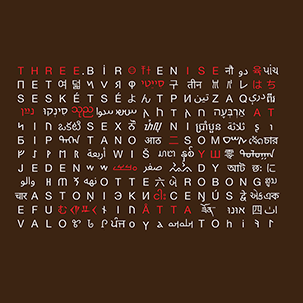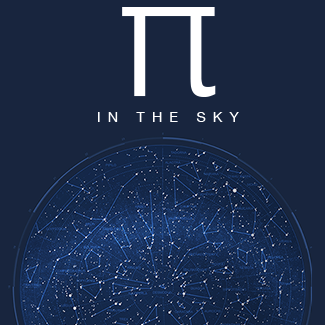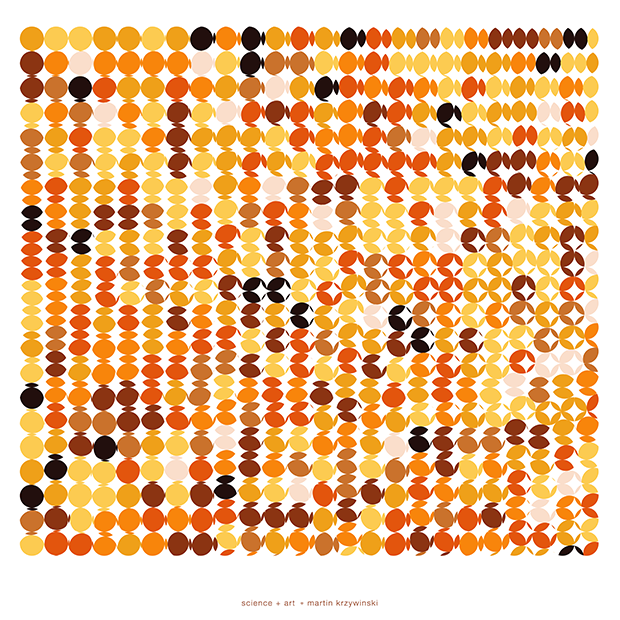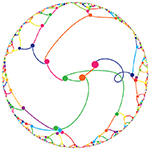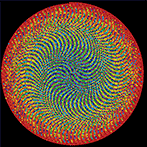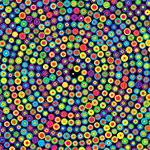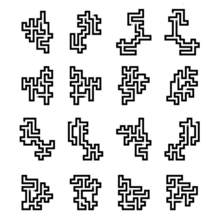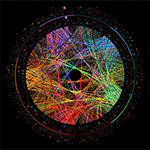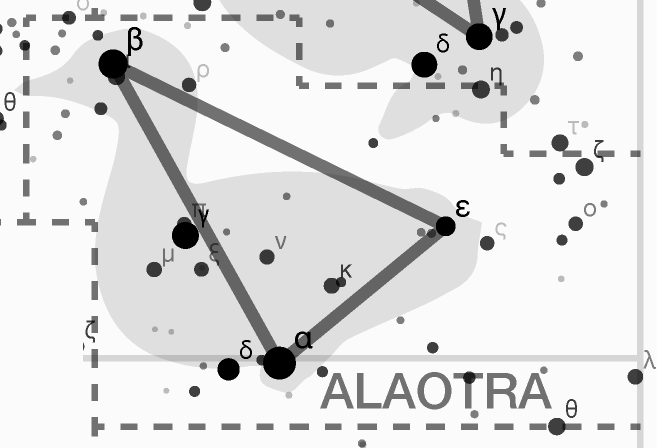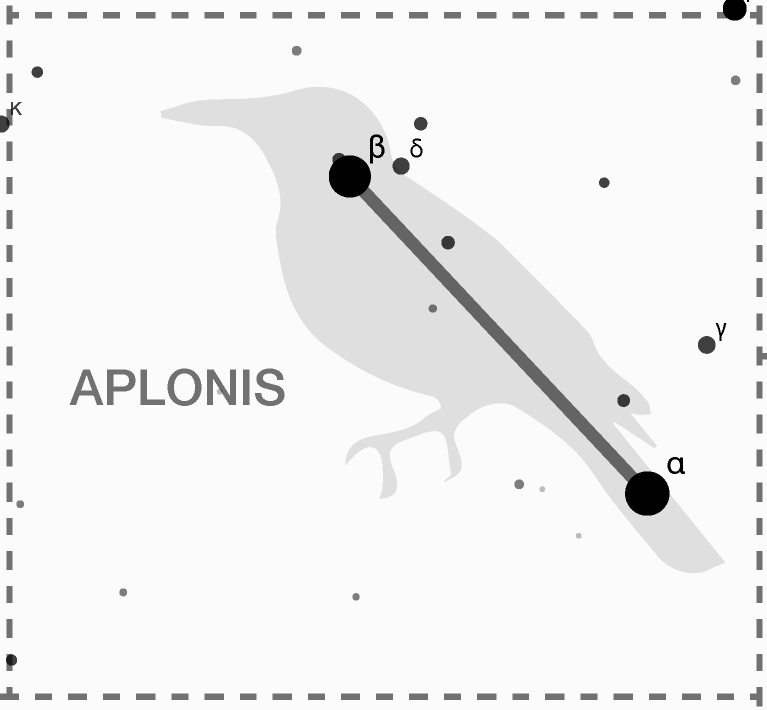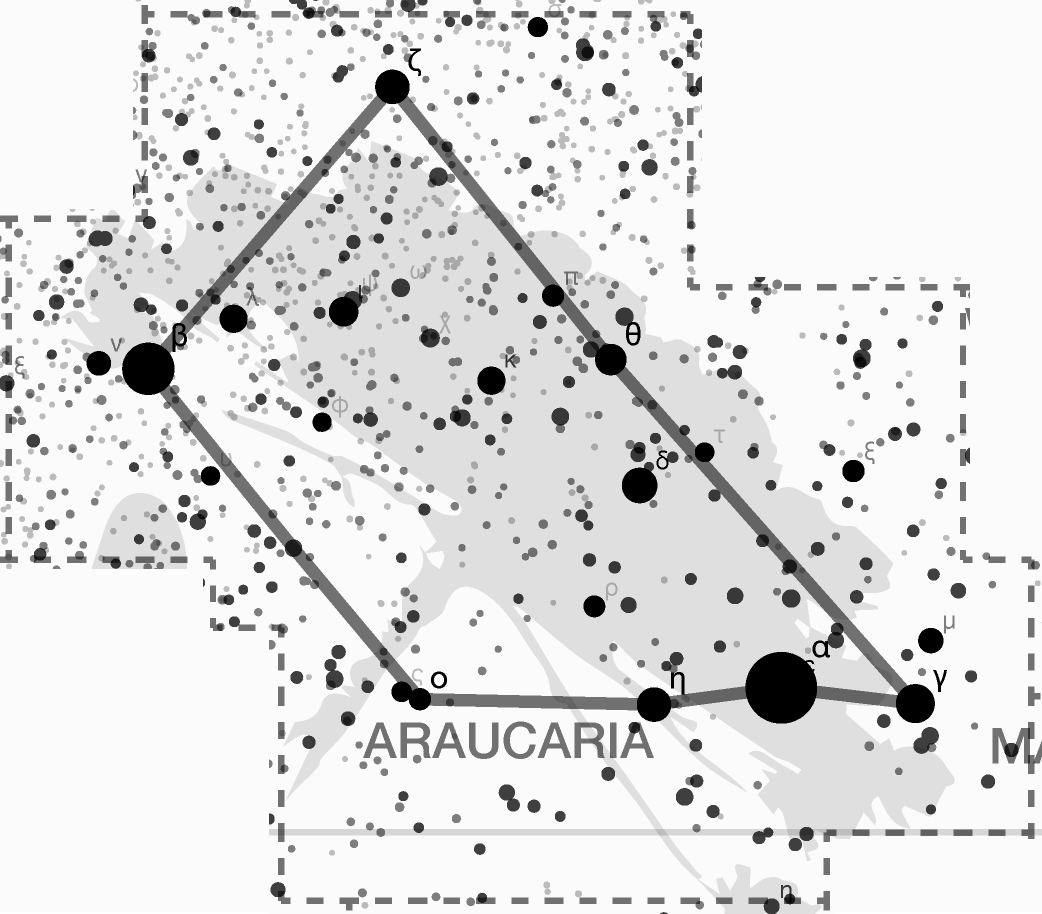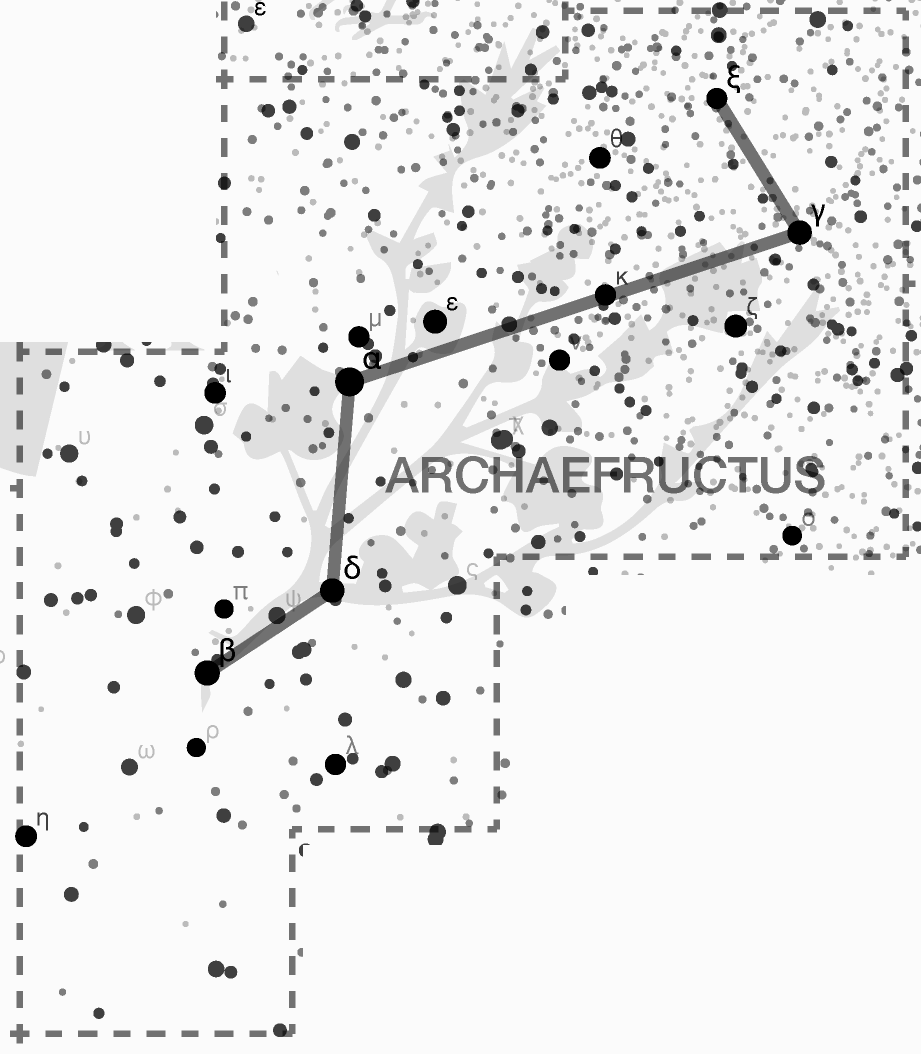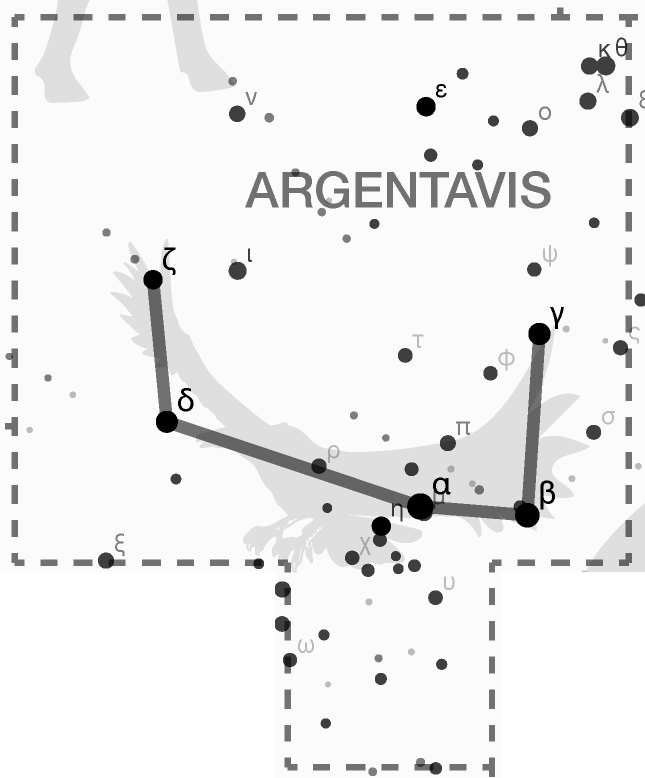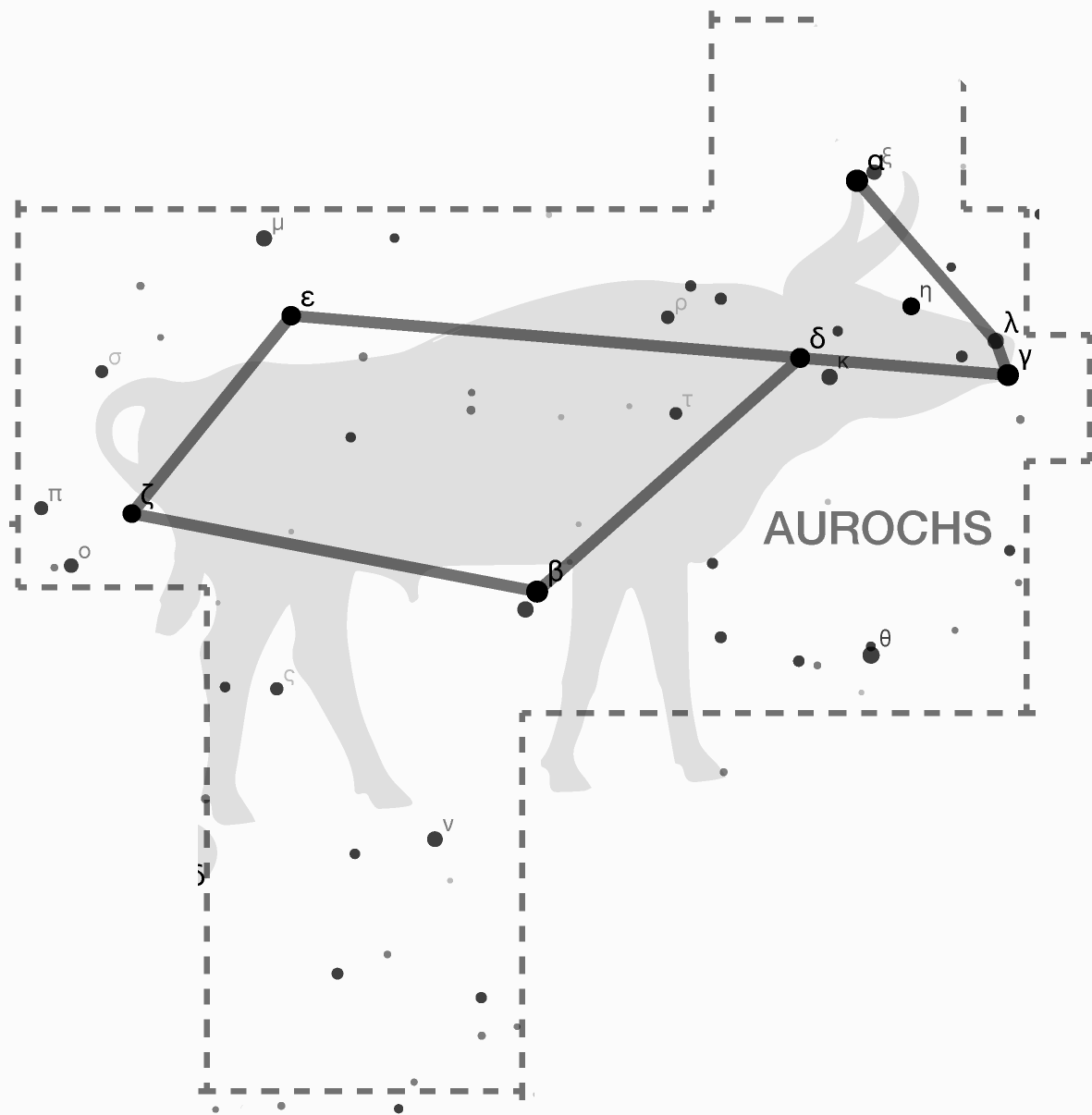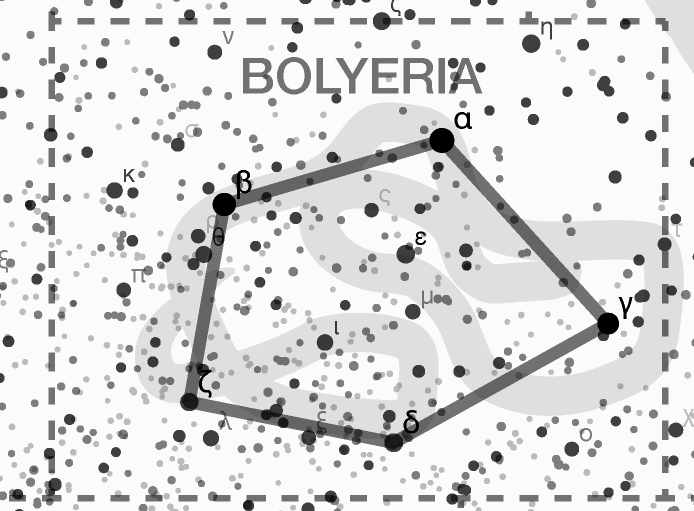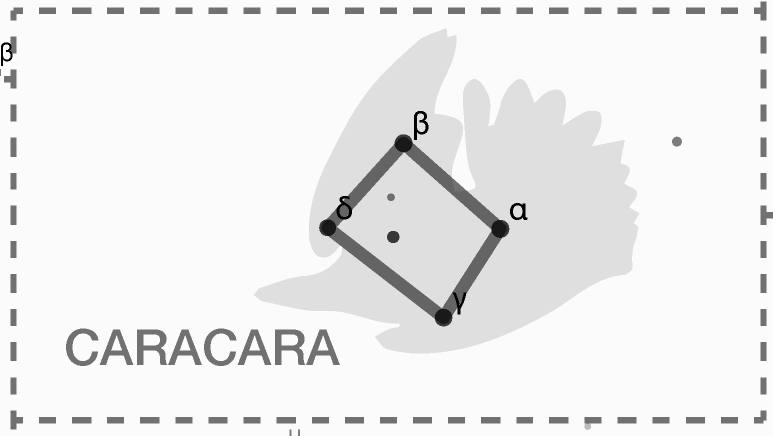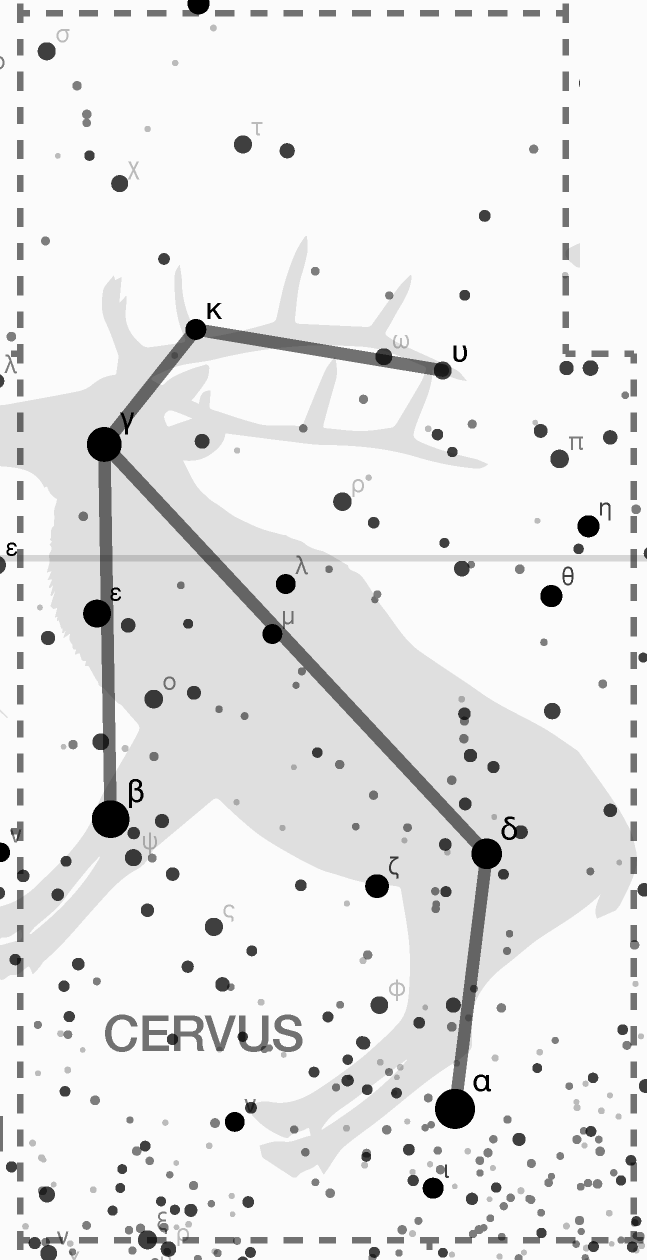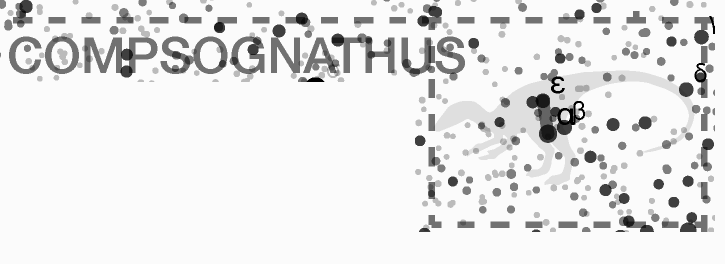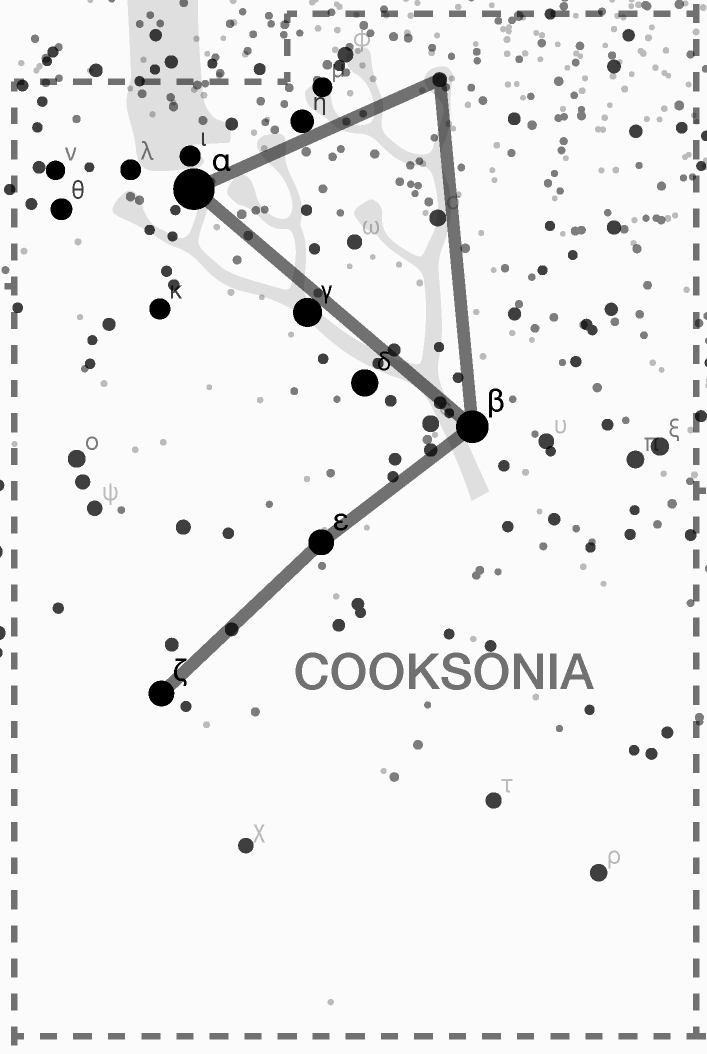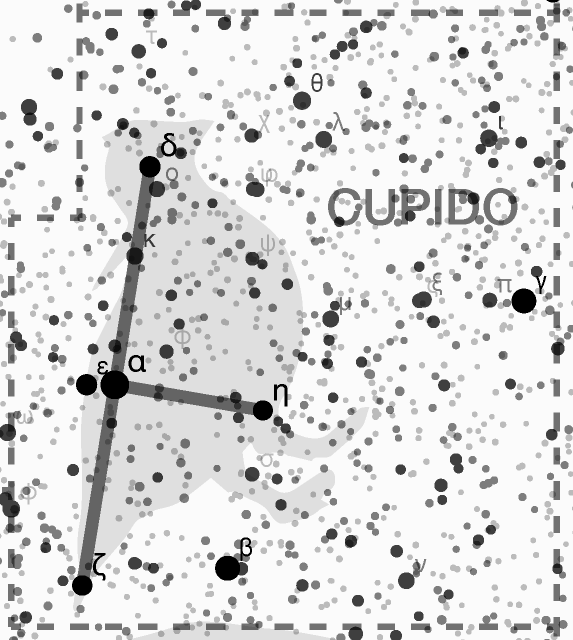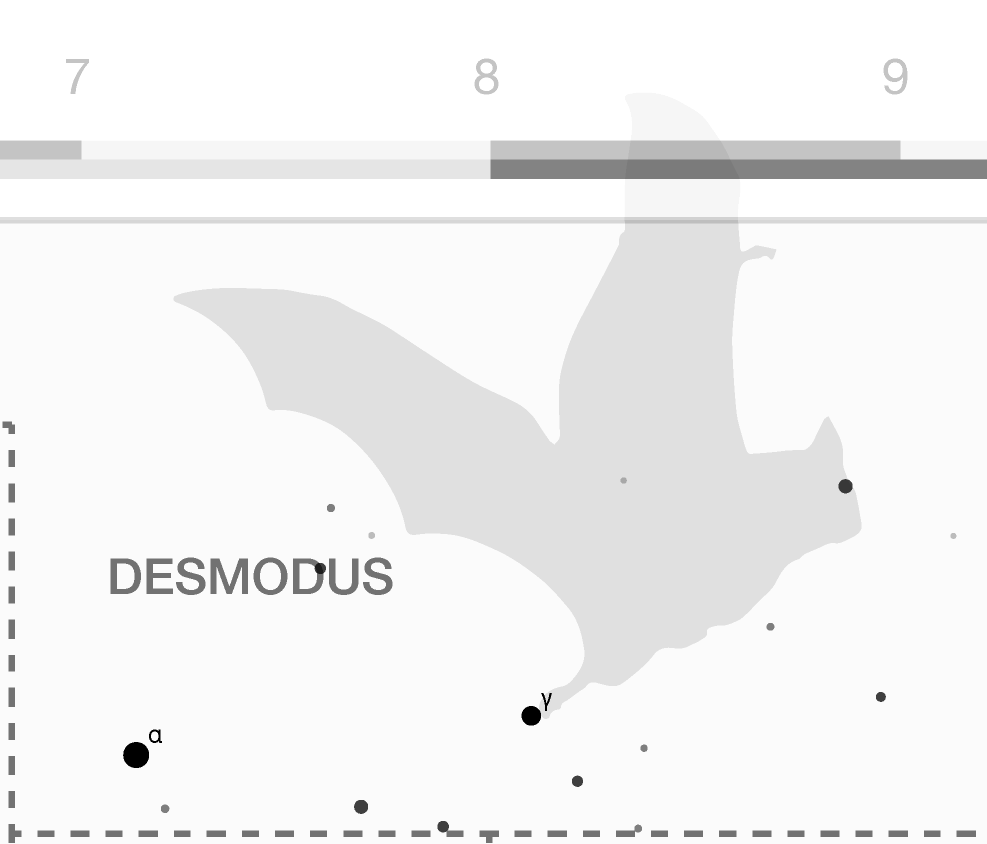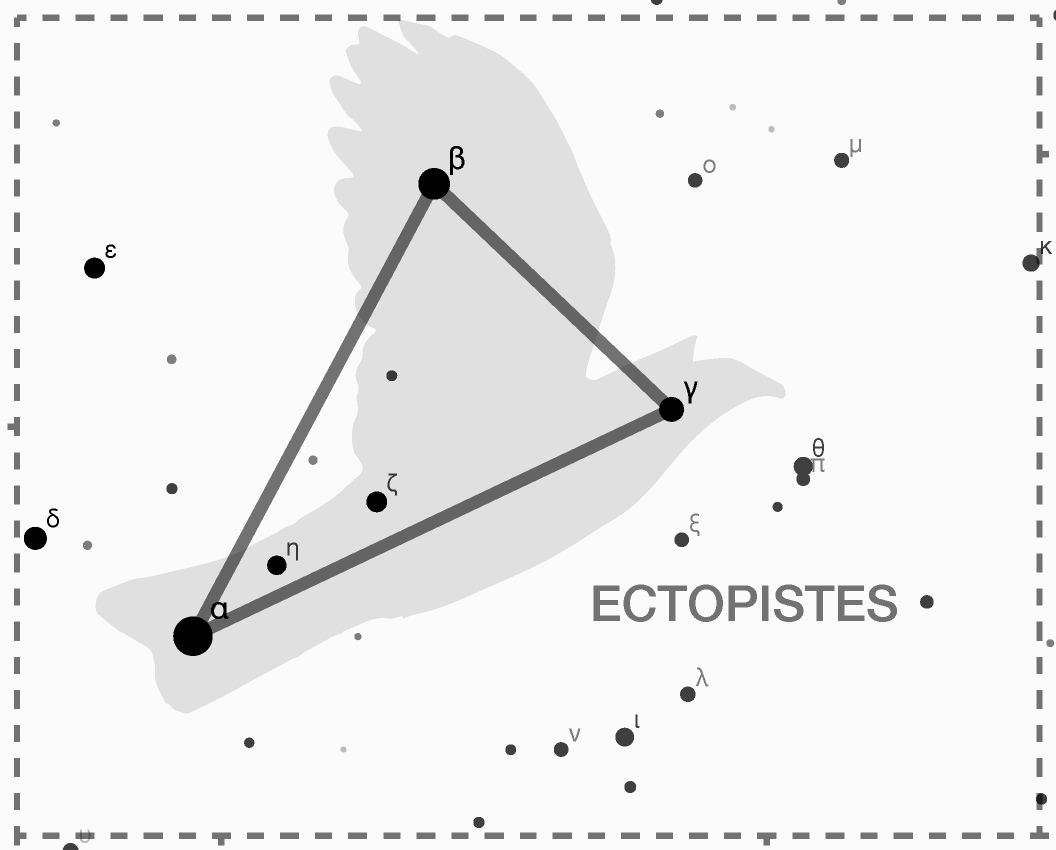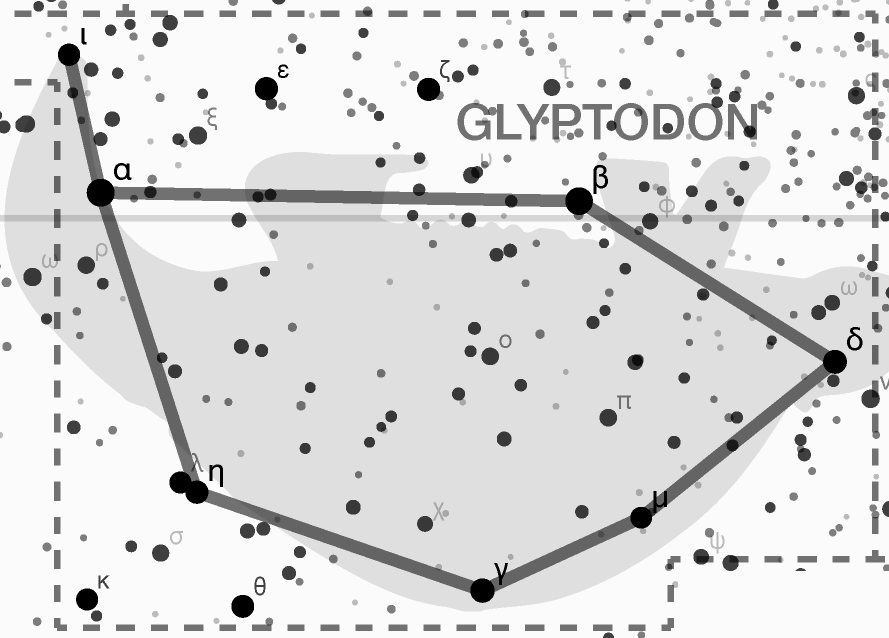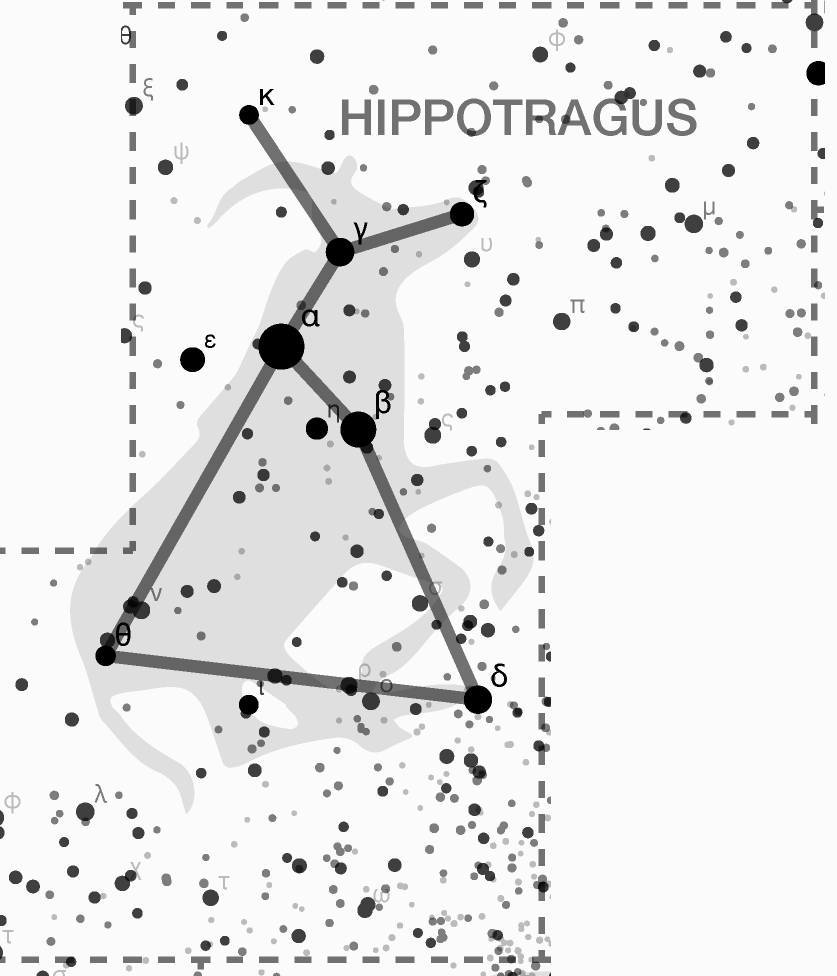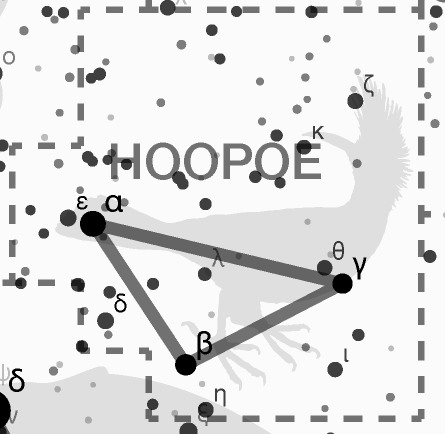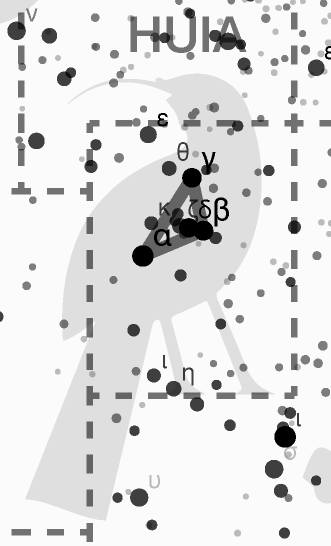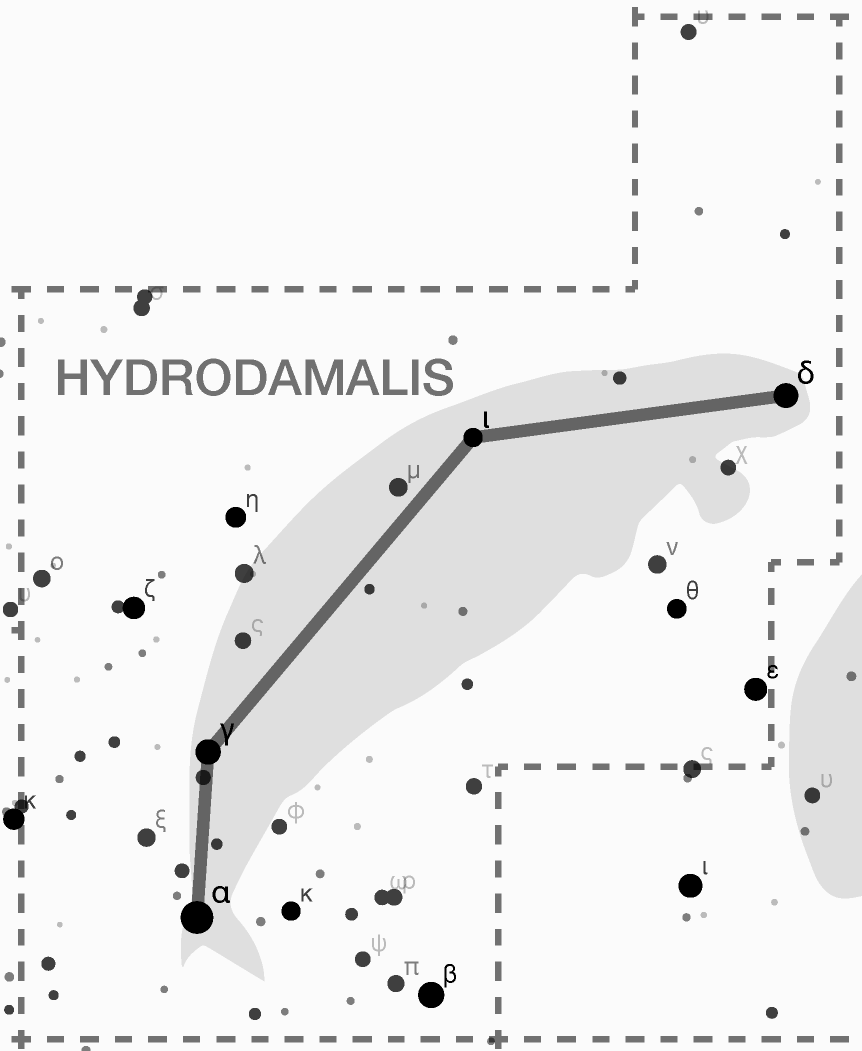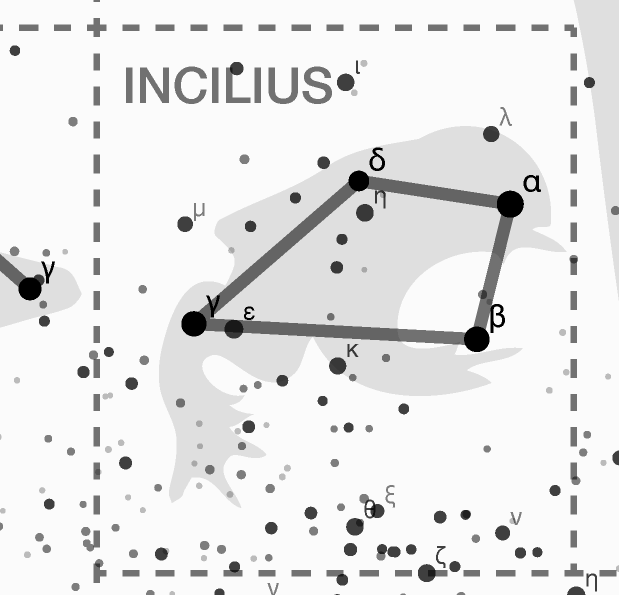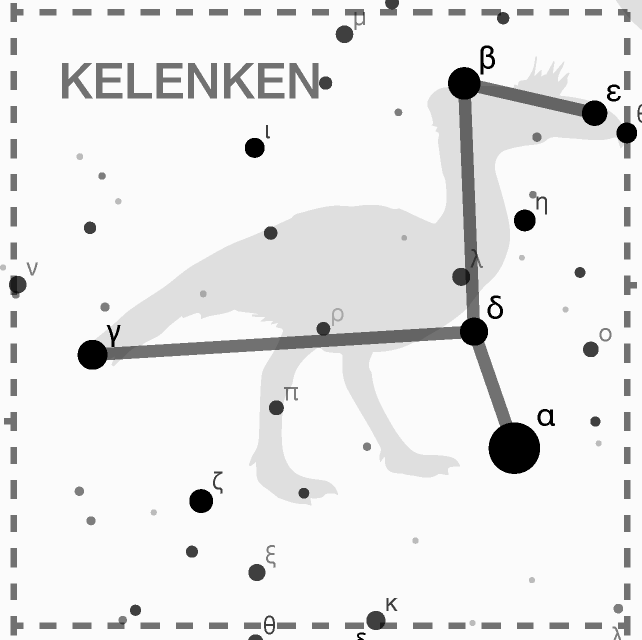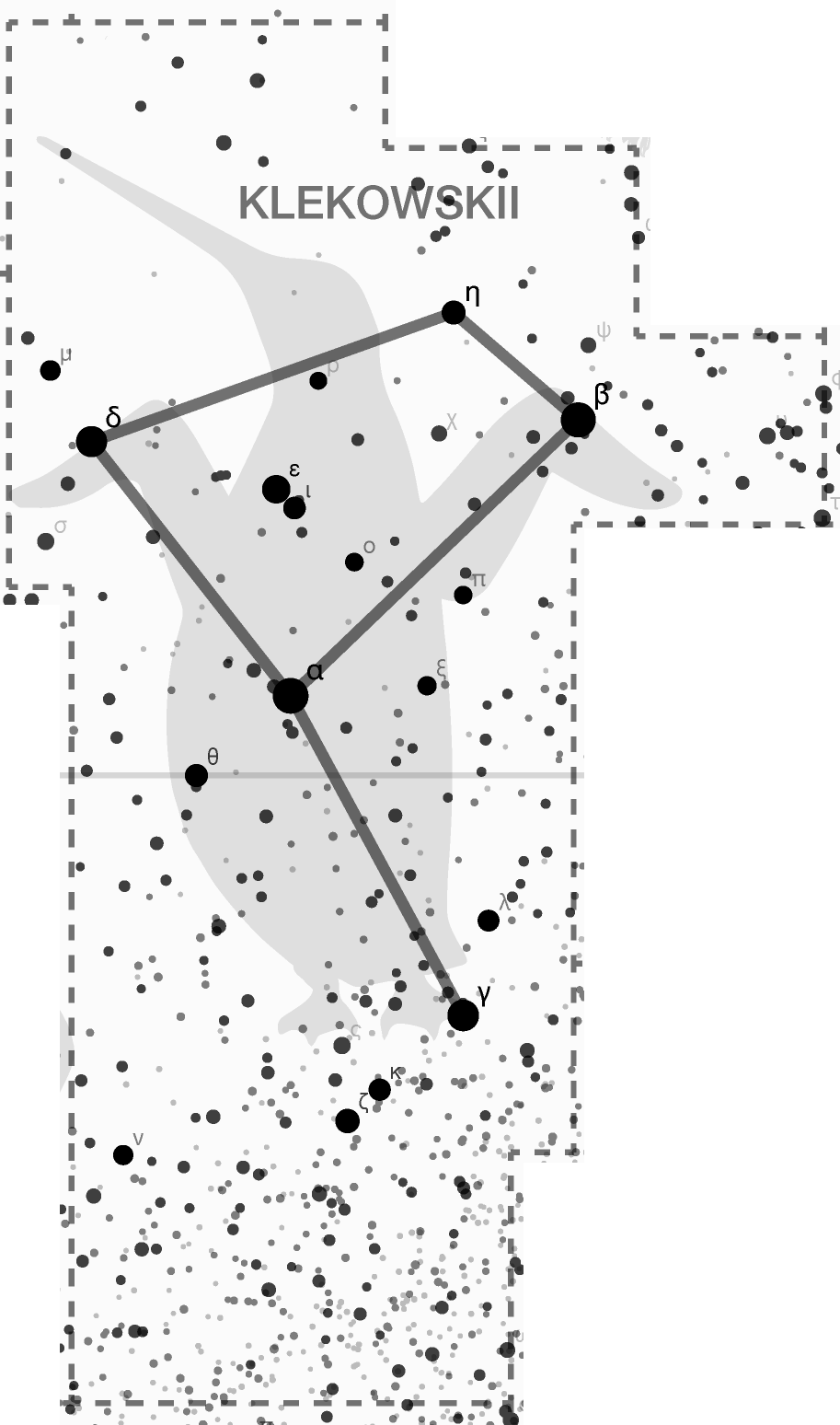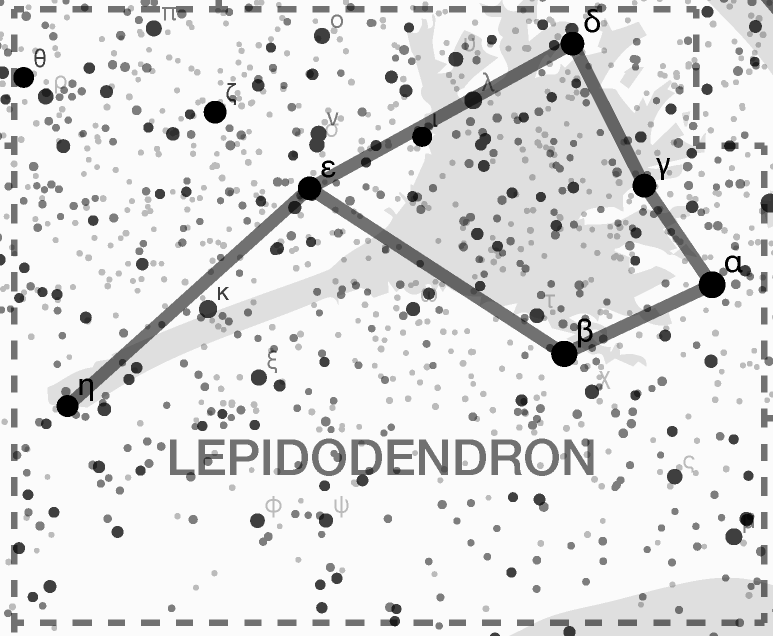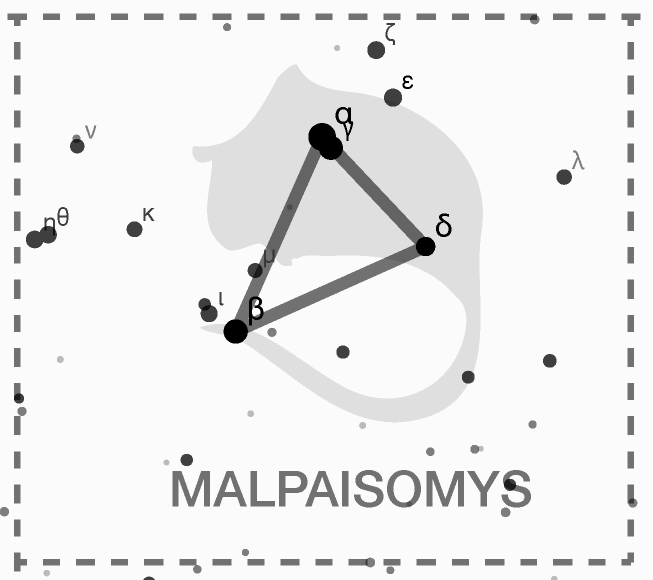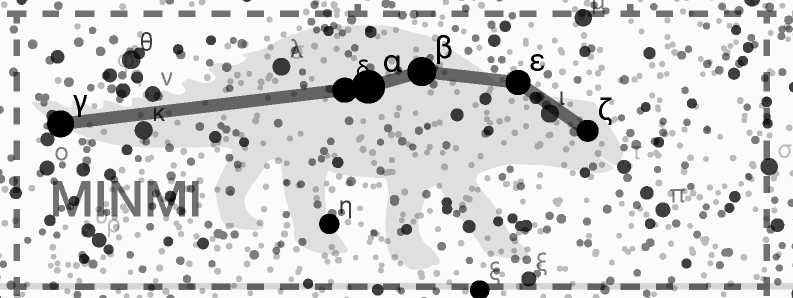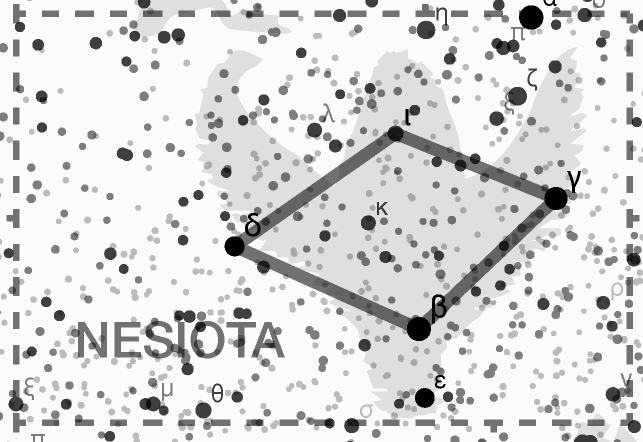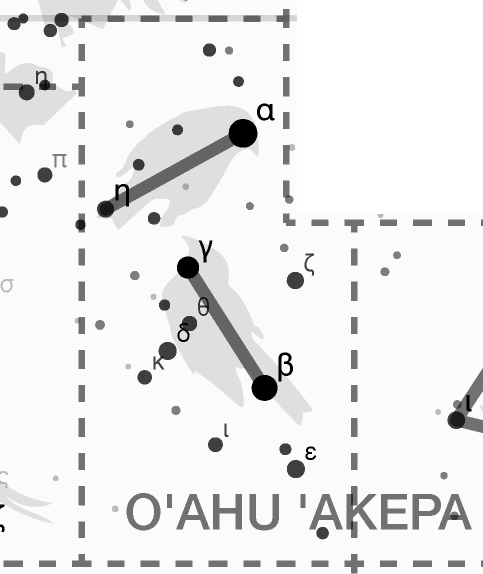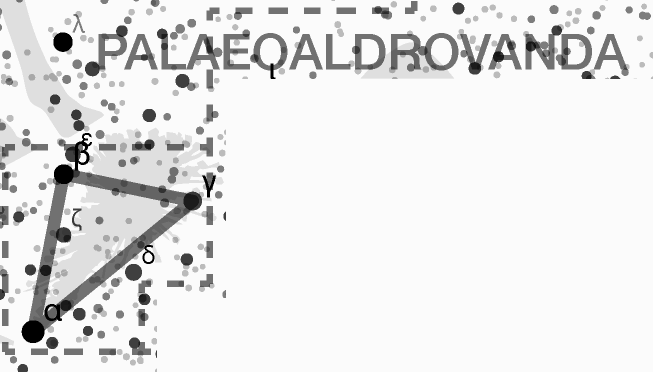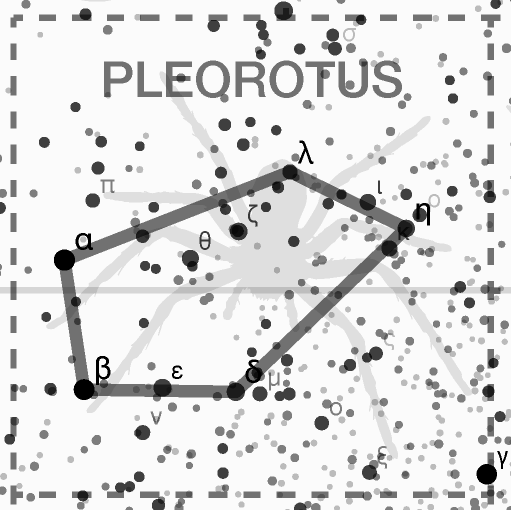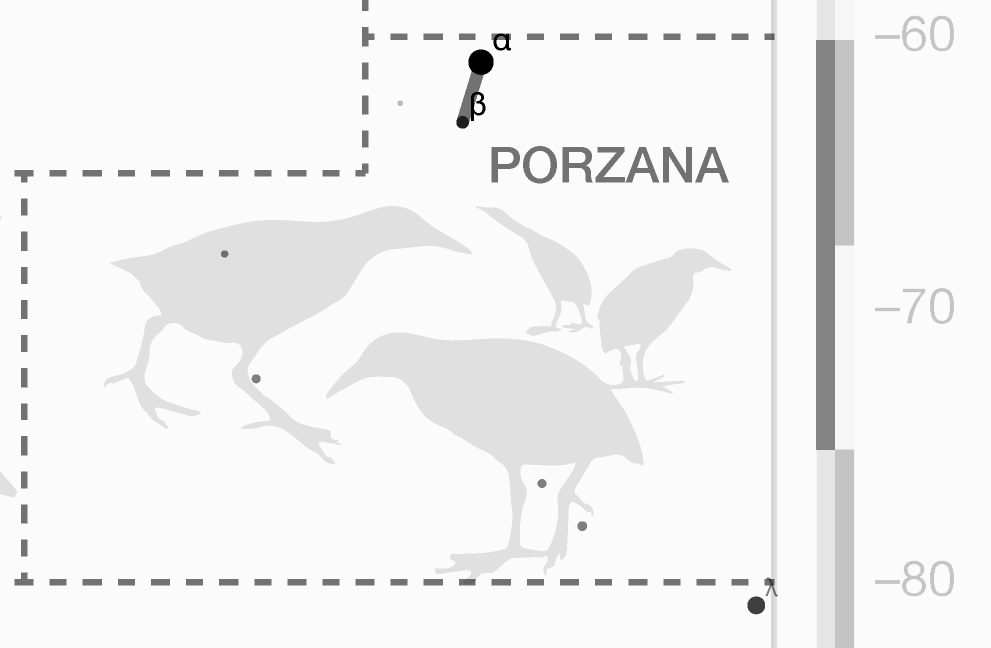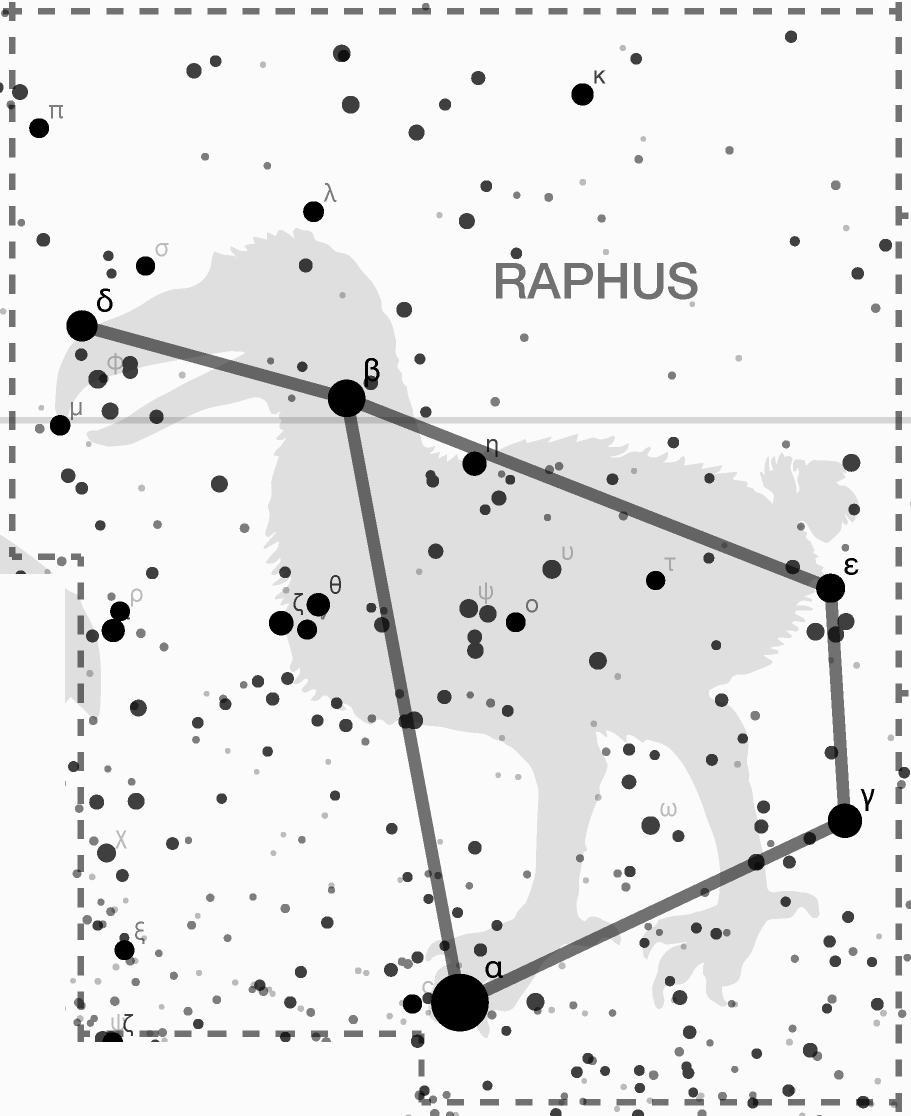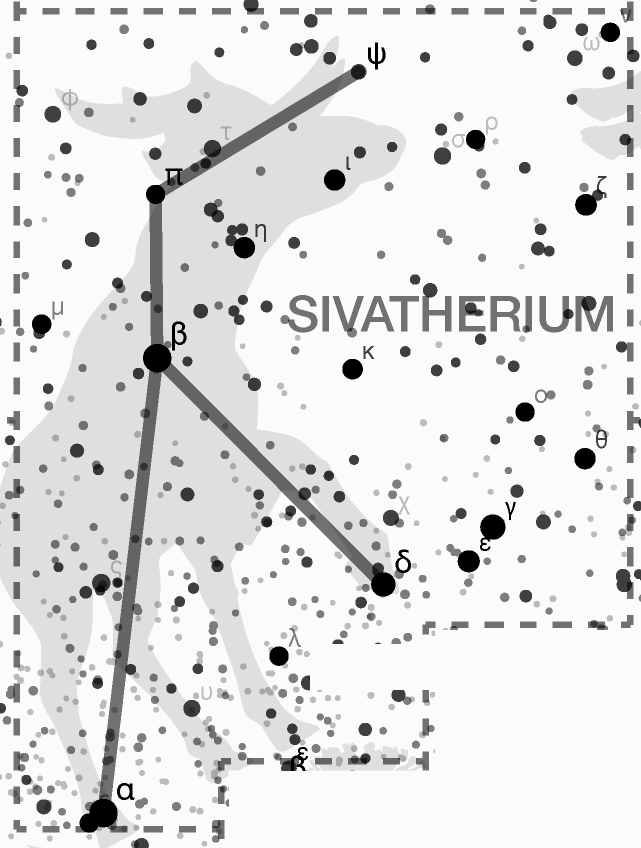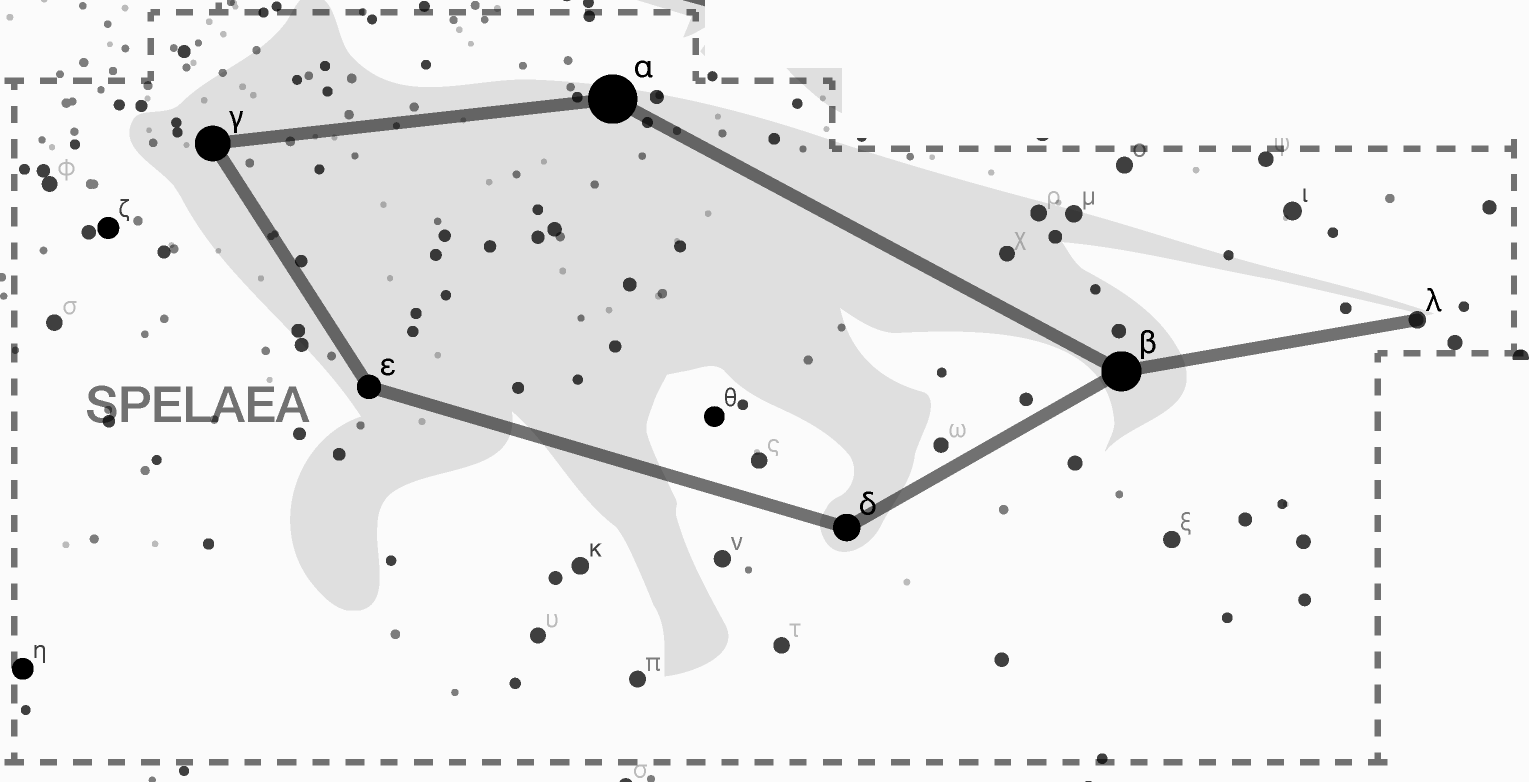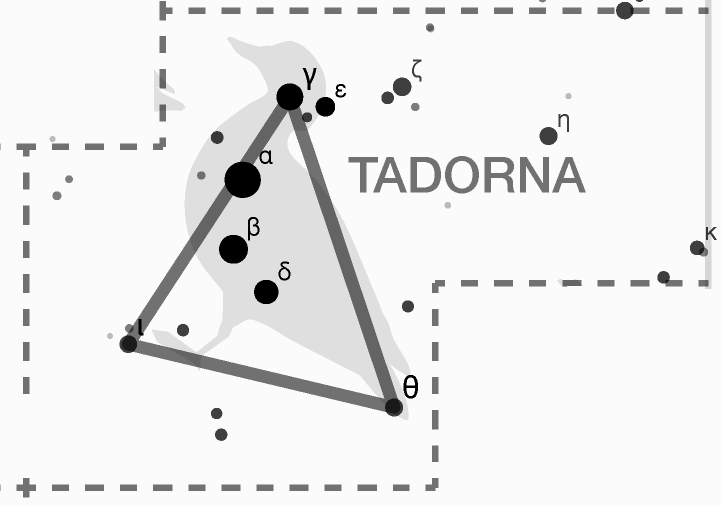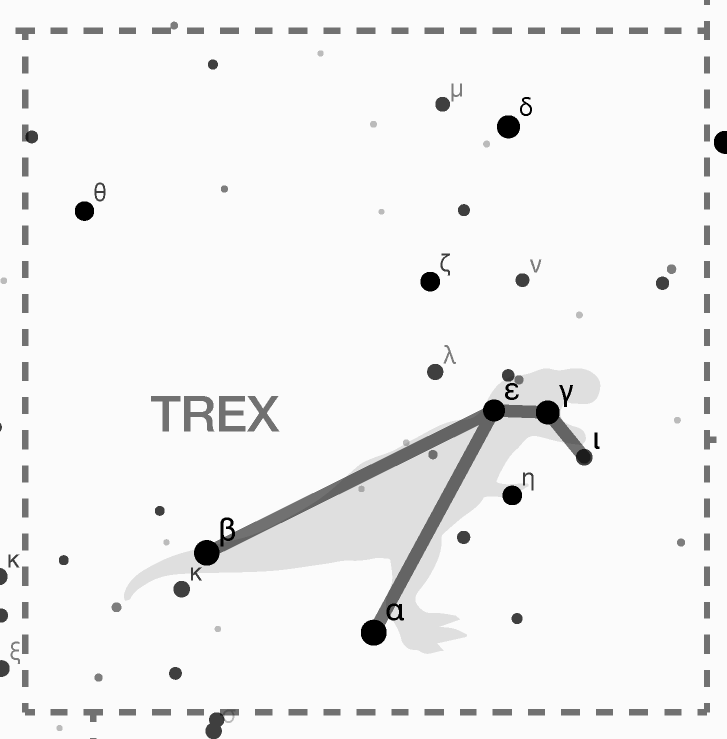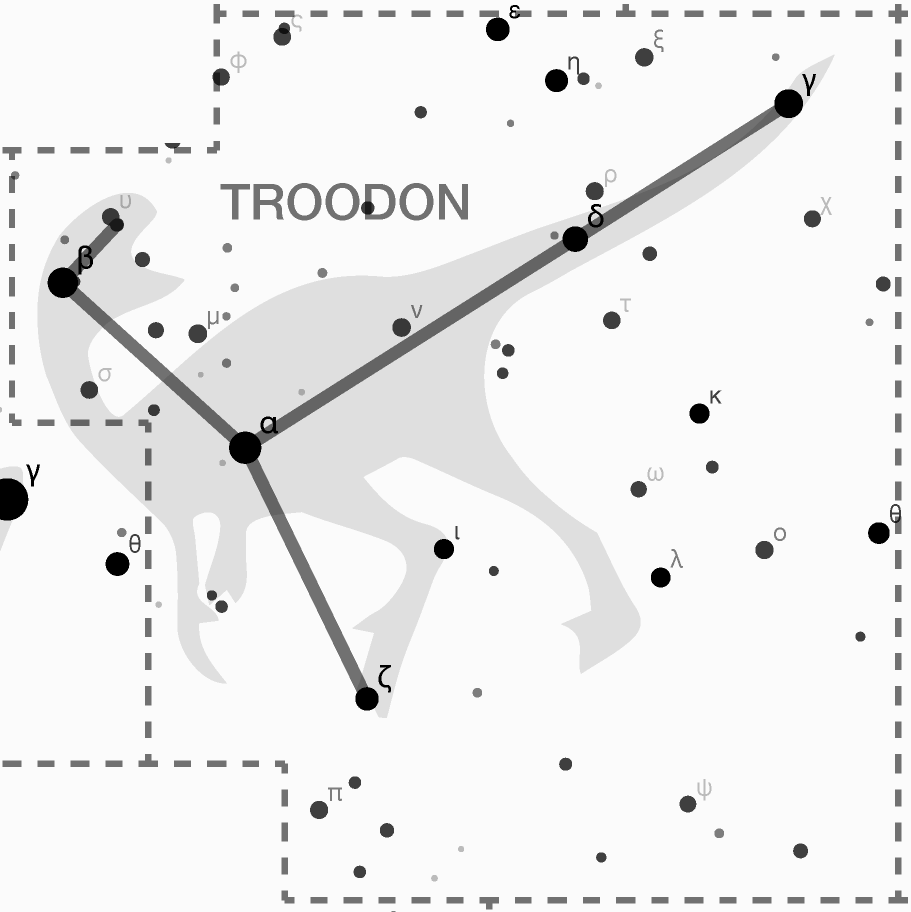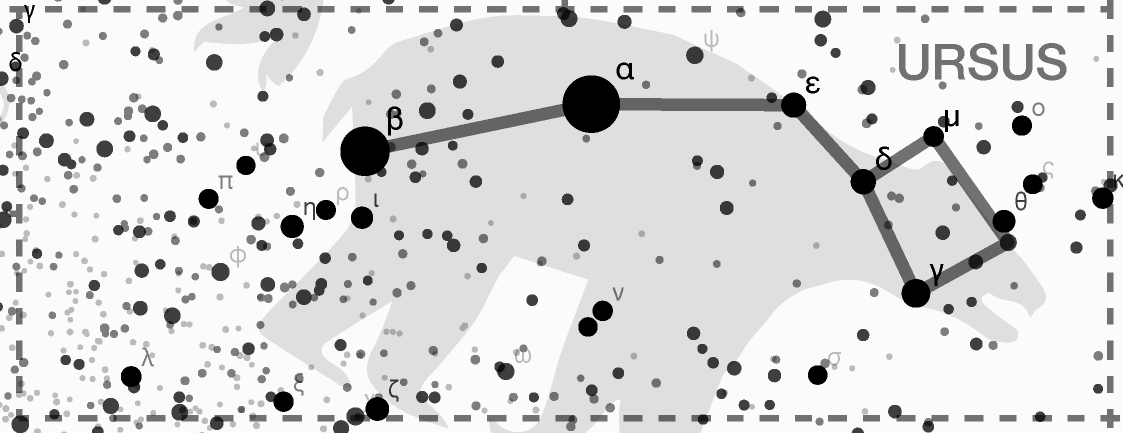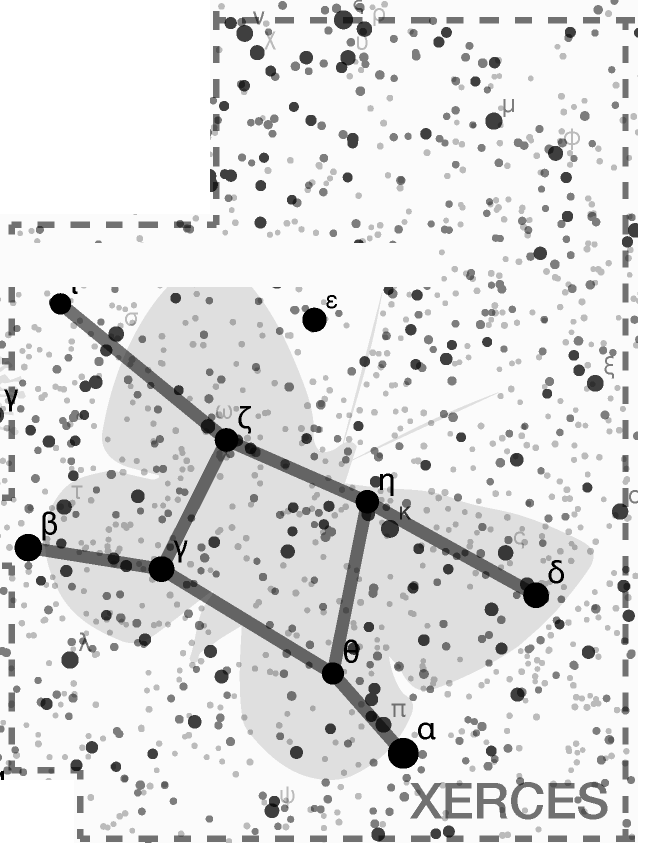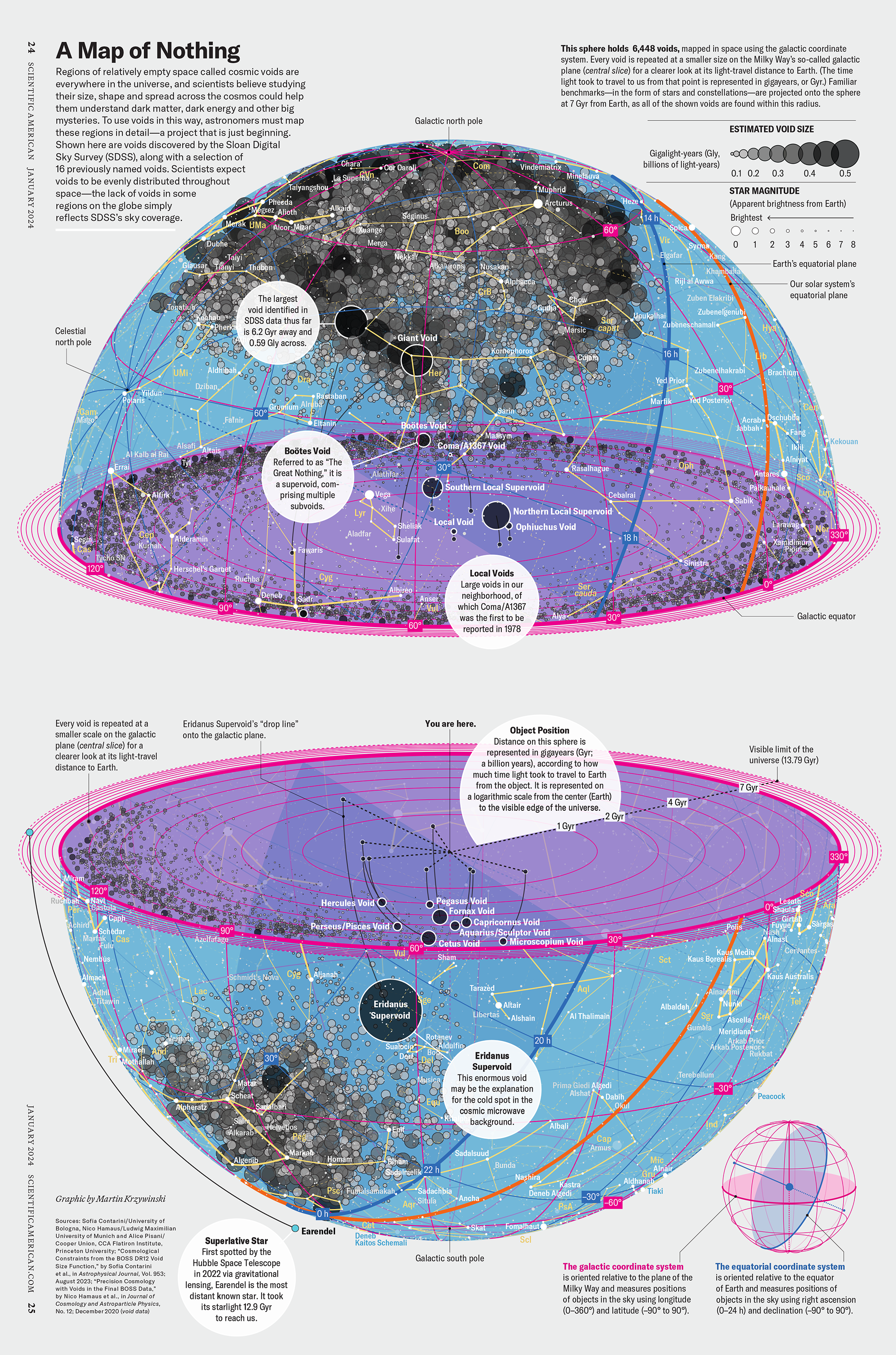`\pi` Day 2017 Art Posters - Star charts and extinct animals and plants
On March 14th celebrate `\pi` Day. Hug `\pi`—find a way to do it.
For those who favour `\tau=2\pi` will have to postpone celebrations until July 26th. That's what you get for thinking that `\pi` is wrong. I sympathize with this position and have `\tau` day art too!
If you're not into details, you may opt to party on July 22nd, which is `\pi` approximation day (`\pi` ≈ 22/7). It's 20% more accurate that the official `\pi` day!
Finally, if you believe that `\pi = 3`, you should read why `\pi` is not equal to 3.
Caelum non animum mutant qui trans mare currunt.
—Horace
This year: creatures that don't exist, but once did, in the skies.
This year's `\pi` day song is Exploration by Karminsky Experience Inc. Why? Because "you never know what you'll find on an exploration".
create myths and contribute!
Want to contribute to the mythology behind the constellations in the `\pi` in the sky? Many already have a story, but others still need one. Please submit your stories!
The `\pi` star chart has 80 constellations. Many of them have stories to tell—look up and listen.

I would love to have a complete mythology for each constellation. Please submit your stories!
contributions
Camptor — Veronica Falconeri
dramatis personae—the constellations
The symbols beside the constellation index indicate which hemisphere the constellation can be found (◓ north, ◒ south or ● both). The first 25 brightest stars in the constellation are also listed, along with their apparent magnitude, longitude and latitude.
Alloperla Alloperla roberti
Aplonis Aplonis ulietensis
Araucaria Araucaria mirabilis
Archaeamphora Archaeamphora longicervia
Archaefructus Archaefructus eoflora
Archaeopteryx Archaeopteryx lithographica
Ardea Ardea bennuides
Argentavis Argentavis magnificens
Aurochs Bos primigenius
Basilosaurus Basilosaurus cetoides
Bolyeria Bolyeria multocarinata
Bron Brontosaurus excelsus
Camelops Camelops kansanus
Camptor Camptorhynchus labradorius
Caracara Caracara lutosa
Cervus Cervus canadensis canadensis
Compsognathus Compsognathus longipes
Cooksonia Cooksonia bohemica
Copepteryx Copepteryx titan
Corvina Aplonis corvina
Cupido Tympanuchus cupido cupido
Cylindraspis Cylindraspis indica
Deinocheirus Deinocheirus mirificus
Desmodus Desmodus draculae
Ectopistes Ectopistes migratorius
Glyptodon Glyptodon clavipes
Hippotragus Hippotragus niger
Hoopoe Fregilupus varius
Huia Heteralocha acutirostris
Hydrodamalis Hydrodamalis gigas
Ibex Capra pyrenaica pyrenaica)
Incilius Incilius periglenes
Kelenken Kelenken guillermoi
Kimbetopsalis Kimbetopsalis simmonsae
Klekowskii Palaeeudyptes klekowskii
Lepidodendron Lepidodendron
Malpaisomys Malpaisomys insularis
Mammuthus Mammuthus primigenius
Mariana Anas oustaleti
Megalodon Carcharodon Megalodon
Minmi Minmi paravertebra
Moa Dinornis novaezealandiae
Moho Moho braccatus
Nesiota Nesiota elliptica
O'ahu 'akepa Loxops wolstenholmei
Palaeoaldrovanda Palaeoaldrovanda splendens
Pecatonica Acanthametropus pecatonica
Pelagornis Pelagornis sandersi
Phelsuma Phelsuma edwardnewtoni
Pinguinus Pinguinus impennis
Pinta Chelonoidis abingdonii
Pipilo Pipilo naufragus
Pleorotus Pleorotus braueri
Pluchea Pluchea glutinosa
Po'ouli Melamprosops phaeosoma
Porzana Porzana palmeri
Pterodactyl Pterodactylus antiquus
Quagga Equus quagga quagga
Raphus Raphus cucullatus
Rhynia Rhynia gwynne-vaughanii
Rodhocetus Rodhocetus kasrani
Silphium Ferula tingitana
Sivatherium Sivatherium giganteum
Spelaea Panthera leo spelaea
Swamphen Porphyrio coerulescens
Tadorna Tadorna cristata
Tecopa Cyprinodon nevadensis calidae
Thylacine Thylacinus cynocephalus
Traversia Traversia lyalli
Trex Tyrannosaurus rex
Troodon Troodon formosus
Urania Urania sloanus
Ursus Ursus spelaeus
Valerianella Varianella affinis
WhĒkau Sceloglaux albifacies
Xerces Glaucopsyche xerces
Yersinia Yersinia pestis
Alaotra is frustrated that Tadorna seems to get all the attention. Often confused for a duck, Alaotra would love you to know that she's in fact a grebe. She's very proud of this fact, despite of being prone to falls due to some biomechanical issues having to do with foot placement.
Shape: 3/57 stars, 3 edges.
Shape: 4/42 stars, 4 edges.
Shape: 2/21 stars, 1 edges.
Araucaria is truly a marvel. She is so large, in fact, that the constellation only shows the canopy and does not include the tree trunk—which was known to reach a height of 100 m. Araucaria offers plenty of protection and has many flying friends all around, including Urania, Moho and WhĒkau. Just a little further are the ducks (and a grebe), Camptor, Mariana, Tadorna and Alaotra. They would love to visit Araucaria but worry that they are too heavy to perch on her branches.
Shape: 8/1232 stars, 8 edges.
Shape: 7/1838 stars, 7 edges.
Shape: 5/1019 stars, 4 edges.
Shape: 14/2287 stars, 14 edges.
Urged by Camelops, Ardea is trying to beat Aepyornis and be the first to see beyond the sky. It looks like she may be winning, but Camelops knows its a futile pursuit. Only he knows what is beyond the sky.
Shape: 9/1768 stars, 9 edges.
Argentavis is a big bird in the big sky. There are many stories of his feud with Pelagornis, who spreads his wings in the southern hemisphere — both insist that they have the biggest wing span.
Shape: 5/69 stars, 4 edges.
Runs in the vast plains of the north together with Mammuthus and Quagga.
Shape: 7/62 stars, 7 edges.
The king lizard dives into the depths of the sky at the very tip of the south hemisphere. Some say that he is chasing the South star, `\alpha` Basilosaurus.
Shape: 3/61 stars, 2 edges.
Shape: 5/602 stars, 5 edges.
It's hard to be bigger than Bron. He must always pay attention not to step on his frolicking friend Compsognathus, who seeks to find protection in Bron's shadow. Some believe that if Bron stretches his neck, he can look above the sky! But don't tell Ardea this—she's in a contest with Aepyornis to be the first!
Shape: 12/5230 stars, 11 edges.
Camelops played a cruel joke on Ardea and Aepyornis, asking them to try to look beyond the sky. Both think they have the longest neck, so they're still trying!
Shape: 6/1789 stars, 5 edges.
Camptor flew long and far to find a pond without ducks on Earth, but could find no such pond. So she chose longest journey, and flew to settle in the sky.
Shape: 3/570 stars, 3 edges.
Shape: 4/7 stars, 4 edges.
The last elk was shot in Pennsylvania. Oops.
Shape: 6/296 stars, 5 edges.
The tiniest of dinosaurs, Compsognathus hides in the protection of Bron's shadow.
Shape: 2/190 stars, 1 edges.
Shape: 5/364 stars, 5 edges.
Shape: 6/57 stars, 5 edges.
Shape: 3/82 stars, 2 edges.
Shape: 4/1164 stars, 3 edges.
Ever since meeting Pinta, they've been fast (and slow) friends.
Shape: 4/233 stars, 4 edges.
Shape: 5/47 stars, 5 edges.
It is thought that each night Desmodus flies up against the dome of the sky, looking for a way to escape.
Shape: 3/122 stars, 3 edges.
The last pidgeon, Martha, died in 1914 at the Cincinanati zoo. What a place to leave the earth from, eh?
Shape: 3/33 stars, 3 edges.
The Glyptodon is very slowly crossing from the south to the north hemisphere to play with Bron and Compsognathus. Will he make it?
Shape: 7/332 stars, 7 edges.
Shape: 7/437 stars, 7 edges.
Shape: 3/73 stars, 3 edges.
Shape: 3/53 stars, 3 edges.
Shape: 4/72 stars, 3 edges.
Shape: 6/817 stars, 6 edges.
Toads are studied by herpetologists. I'd love to be one just so that I can say that word at a party.
Shape: 4/106 stars, 4 edges.
Shape: 5/48 stars, 4 edges.
Shape: 8/2155 stars, 7 edges.
Shape: 5/714 stars, 5 edges.
Shape: 6/1028 stars, 6 edges.
Not much is known about when Malpaisomys became extinct. Some think it's when humans and dogs arrived on the Canary islands. Malpaisomys worries that because of his small size, nobody cares.
Shape: 3/38 stars, 3 edges.
Shape: 8/69 stars, 7 edges.
Shape: 3/17 stars, 3 edges.
One word: terrifying. More words: endlessly chasing Tecopa. The megalodon possesses the brightest star in the sky.
Shape: 4/20 stars, 4 edges.
Shape: 5/122 stars, 5 edges.
The Minmi is actually much larger than his name suggests. He really wants you to know that.
Shape: 5/749 stars, 4 edges.
Shape: 5/60 stars, 5 edges.
The ʻōʻō has all its letters with diacriticals. This makes the whēkau jealous. They haven't talked since.
Shape: 6/70 stars, 6 edges.
I frankly hate olives and there's no end to my pleasure in throwing olives at the sky.
Shape: 4/784 stars, 4 edges.
Like Pipilo, the O'ahu 'akepa is the only other multi-part constellation. Here, a pair of akepas are chatting and spreading rumors about Tadorna.
Shape: 4/30 stars, 2 edges.
Rumor has it Palaeoaldrovanda was related to the carnivorous plant genus Aldrovanda! Xerces is seen flying nearby. He must be careful.
Shape: 3/121 stars, 3 edges.
The mayfly loves to pester Raphus, the Dodo bird. He is too worried about guarding his eggs to pay attention to Pecatonica, though.
Shape: 4/58 stars, 3 edges.
He can barely fit in the southern skies. With a wingspan of over 5 meters, he is certain that he is the biggest bird in the sky. However, Argentavis of the northern hemisphere disagrees.
Shape: 6/192 stars, 5 edges.
The Phelsuma was described as unafraid of humans and said to be tame and happy to eat fruit from your hand. Lessons to be learned here?
Shape: 10/131 stars, 10 edges.
Shape: 3/88 stars, 2 edges.
The last of its kind, a male named Lonesome George, died in 2012.
Shape: 5/402 stars, 5 edges.
A rare flocking constellation. These towhees cross hemispheres and keep the Glyptodon company.
Shape: 44/261 stars, 22 edges.
Shape: 5/406 stars, 5 edges.
Shape: 4/652 stars, 4 edges.
The last sighting of a pair of po'ouli was in 2004 and now again, in the sky of pi.
Shape: 4/145 stars, 4 edges.
Tiny guys in the corner.
Shape: 2/7 stars, 1 edges.
Shape: 9/1676 stars, 8 edges.
Comical and uncertain of its stripes, Quagga is often seen asking Aurochs for his advice.
Shape: 6/139 stars, 6 edges.
Raphus is guarding his eggs—the clusters of stars just south of β Raphus (the second brightest star in the constellation) while pestered by Pecatonica.
Shape: 5/358 stars, 5 edges.
Shape: 3/12 stars, 3 edges.
Fleeing from the giant Megalodon, Rodhocetus was an early whale that possessed land mammal characteristics. Some say that he managed to escape from Megalodon and lived out his life on the land, never returning to the sea.
Shape: 6/44 stars, 5 edges.
The last known stalk was given to Emperor Nero. As stories, some have said that he used Silphium as kindle to a larger fire.
Shape: 3/8 stars, 3 edges.
Shape: 5/577 stars, 4 edges.
Shape: 6/202 stars, 6 edges.
Swamphen is delighted to have a diacritical mark in its name, a characteristic shared only by the whēkau, who resides in the northern hemisphere and the ʻōʻō (Moho braccatus) who lives just to the north.
Shape: 3/19 stars, 2 edges.
Rumor has it Tadorna may have snuck into the sky without permission—while not seen since the 1960’s, some say the duck isn’t extinct.
Shape: 3/31 stars, 3 edges.
Tecopa can tolerate heat, which allows him to escape from Megalodon, who will not chase Tecopa through the hot springs.
Shape: 4/100 stars, 3 edges.
The last of its kind was shot by Willem Dafoe in the movie The Hunter. To this day, the Thylacine can be seen screaming in the sky.
Shape: 10/2205 stars, 9 edges.
Shape: 3/481 stars, 3 edges.
Trex is unhappy because he's such a tiny constellation -- he's barely eaten!
Shape: 5/40 stars, 4 edges.
Shape: 6/71 stars, 5 edges.
Shape: 6/751 stars, 5 edges.
Shape: 7/462 stars, 7 edges.
Some members of the genus are not extinct and enjoy being called "corn salad" even though they have never seen a salad.
Shape: 4/1313 stars, 3 edges.
Some say that whēkau can still be heard. Perhaps the joke is on us?
Shape: 3/57 stars, 2 edges.
Brilliant blue butterfly in the dark blue sky. Xerces is the only thing that is bluer than the sky itself. Some say that butterflies are flying flowers and Xerces is never far from Palaeoaldrovanda. He must be careful though. Rumor has it Palaeoaldrovanda was related to the carnivorous plant genus Aldrovanda! Nobody wants to take that chance.
Shape: 8/1299 stars, 8 edges.
Don't let Yersinia's small size fool you. The Black Death may be the smallest creature in the sky, but she'll liquify your insides before you can memorize the 80 constellations. Perhaps out of all the creatures in the sky, this is the one we're happy to see go. But, because it's small, you can never be quite sure Yersinia isn't extinct but merely hiding. Or waiting.
Shape: 3/418 stars, 3 edges.
Propensity score matching
I don’t have good luck in the match points. —Rafael Nadal, Spanish tennis player
In many experimental designs, we need to keep in mind the possibility of confounding variables, which may give rise to bias in the estimate of the treatment effect.
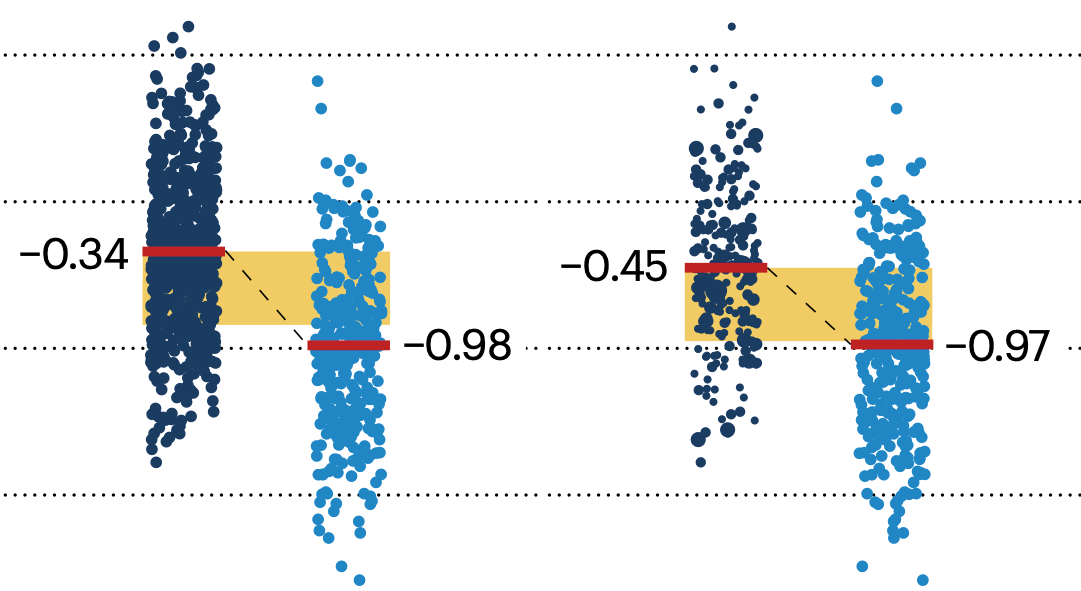
If the control and experimental groups aren't matched (or, roughly, similar enough), this bias can arise.
Sometimes this can be dealt with by randomizing, which on average can balance this effect out. When randomization is not possible, propensity score matching is an excellent strategy to match control and experimental groups.
Kurz, C.F., Krzywinski, M. & Altman, N. (2024) Points of significance: Propensity score matching. Nat. Methods 21:1770–1772.
Nasa to send our human genome discs to the Moon
We'd like to say a ‘cosmic hello’: mathematics, culture, palaeontology, art and science, and ... human genomes.
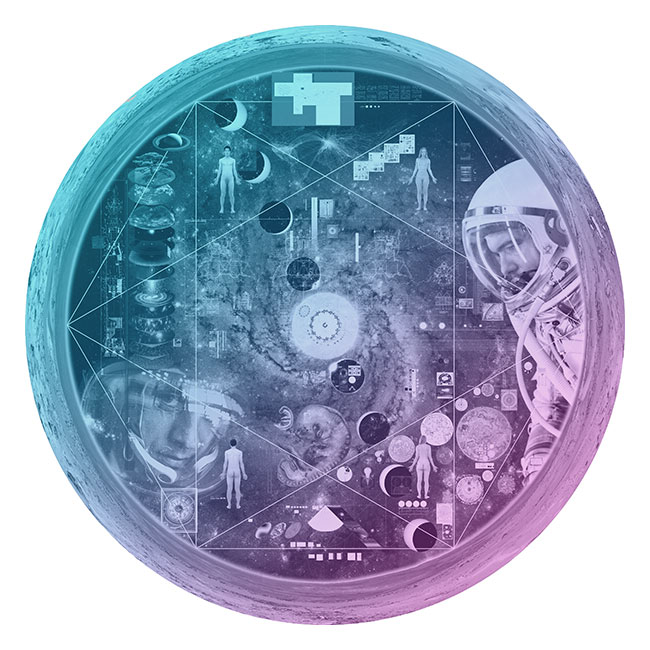


Comparing classifier performance with baselines
All animals are equal, but some animals are more equal than others. —George Orwell
This month, we will illustrate the importance of establishing a baseline performance level.
Baselines are typically generated independently for each dataset using very simple models. Their role is to set the minimum level of acceptable performance and help with comparing relative improvements in performance of other models.
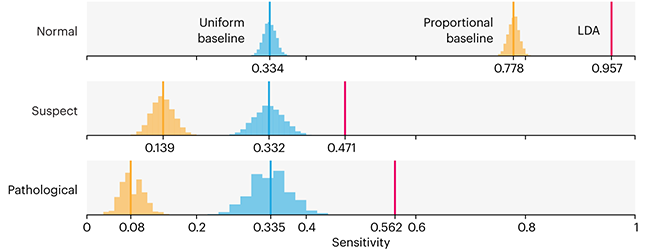
Unfortunately, baselines are often overlooked and, in the presence of a class imbalance, must be established with care.
Megahed, F.M, Chen, Y-J., Jones-Farmer, A., Rigdon, S.E., Krzywinski, M. & Altman, N. (2024) Points of significance: Comparing classifier performance with baselines. Nat. Methods 21:546–548.
Happy 2024 π Day—
sunflowers ho!
Celebrate π Day (March 14th) and dig into the digit garden. Let's grow something.
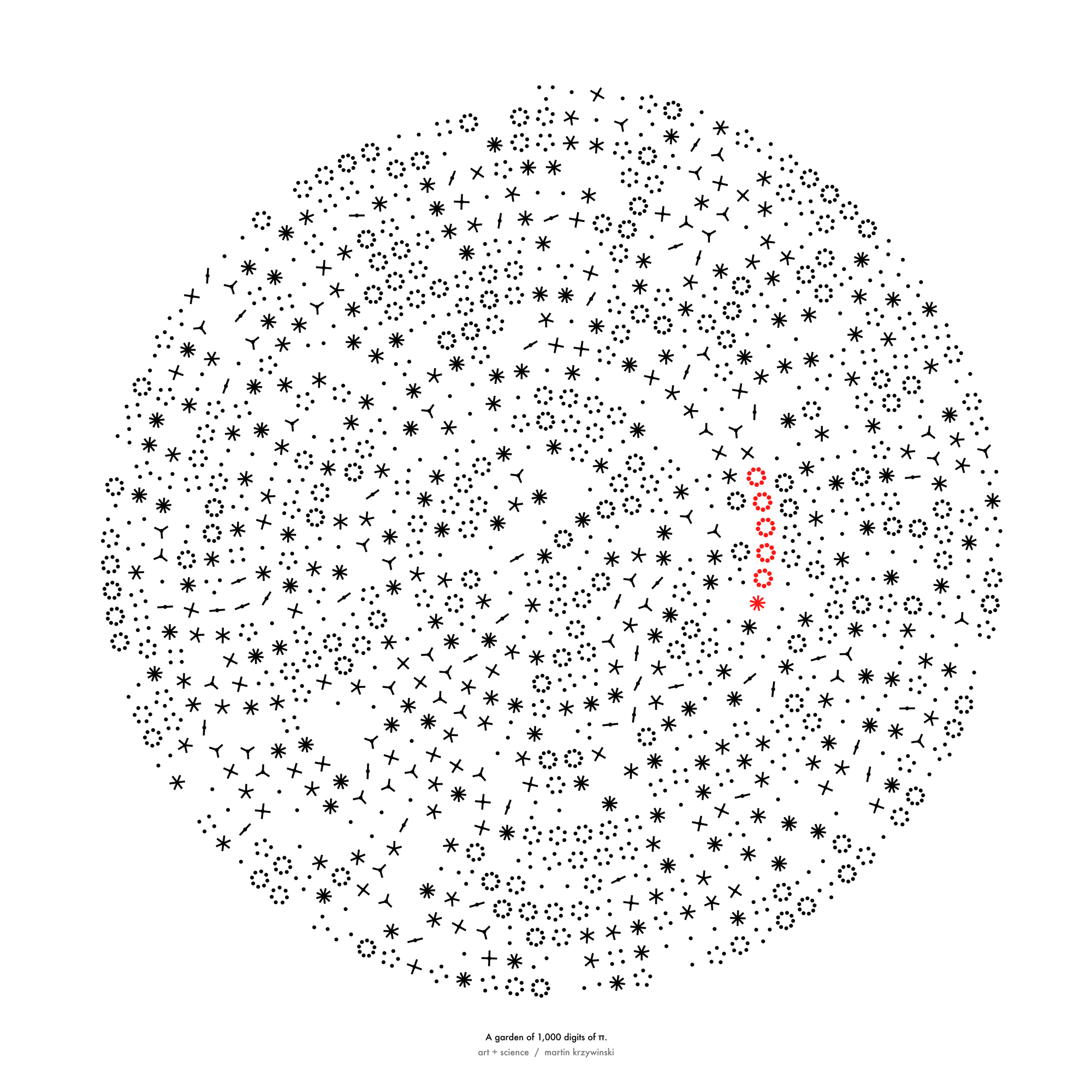
How Analyzing Cosmic Nothing Might Explain Everything
Huge empty areas of the universe called voids could help solve the greatest mysteries in the cosmos.
My graphic accompanying How Analyzing Cosmic Nothing Might Explain Everything in the January 2024 issue of Scientific American depicts the entire Universe in a two-page spread — full of nothing.
The graphic uses the latest data from SDSS 12 and is an update to my Superclusters and Voids poster.
Michael Lemonick (editor) explains on the graphic:
“Regions of relatively empty space called cosmic voids are everywhere in the universe, and scientists believe studying their size, shape and spread across the cosmos could help them understand dark matter, dark energy and other big mysteries.
To use voids in this way, astronomers must map these regions in detail—a project that is just beginning.
Shown here are voids discovered by the Sloan Digital Sky Survey (SDSS), along with a selection of 16 previously named voids. Scientists expect voids to be evenly distributed throughout space—the lack of voids in some regions on the globe simply reflects SDSS’s sky coverage.”
voids
Sofia Contarini, Alice Pisani, Nico Hamaus, Federico Marulli Lauro Moscardini & Marco Baldi (2023) Cosmological Constraints from the BOSS DR12 Void Size Function Astrophysical Journal 953:46.
Nico Hamaus, Alice Pisani, Jin-Ah Choi, Guilhem Lavaux, Benjamin D. Wandelt & Jochen Weller (2020) Journal of Cosmology and Astroparticle Physics 2020:023.
Sloan Digital Sky Survey Data Release 12
Alan MacRobert (Sky & Telescope), Paulina Rowicka/Martin Krzywinski (revisions & Microscopium)
Hoffleit & Warren Jr. (1991) The Bright Star Catalog, 5th Revised Edition (Preliminary Version).
H0 = 67.4 km/(Mpc·s), Ωm = 0.315, Ωv = 0.685. Planck collaboration Planck 2018 results. VI. Cosmological parameters (2018).
constellation figures
stars
cosmology
Error in predictor variables
It is the mark of an educated mind to rest satisfied with the degree of precision that the nature of the subject admits and not to seek exactness where only an approximation is possible. —Aristotle
In regression, the predictors are (typically) assumed to have known values that are measured without error.
Practically, however, predictors are often measured with error. This has a profound (but predictable) effect on the estimates of relationships among variables – the so-called “error in variables” problem.
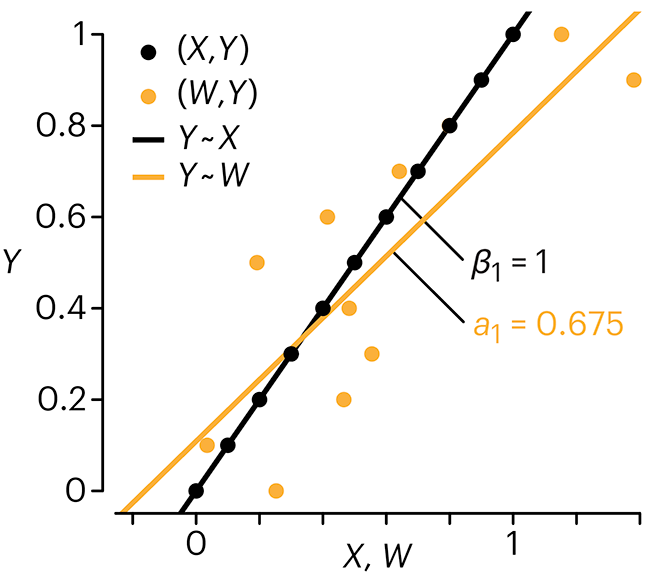
Error in measuring the predictors is often ignored. In this column, we discuss when ignoring this error is harmless and when it can lead to large bias that can leads us to miss important effects.
Altman, N. & Krzywinski, M. (2024) Points of significance: Error in predictor variables. Nat. Methods 21:4–6.
Background reading
Altman, N. & Krzywinski, M. (2015) Points of significance: Simple linear regression. Nat. Methods 12:999–1000.
Lever, J., Krzywinski, M. & Altman, N. (2016) Points of significance: Logistic regression. Nat. Methods 13:541–542 (2016).
Das, K., Krzywinski, M. & Altman, N. (2019) Points of significance: Quantile regression. Nat. Methods 16:451–452.





